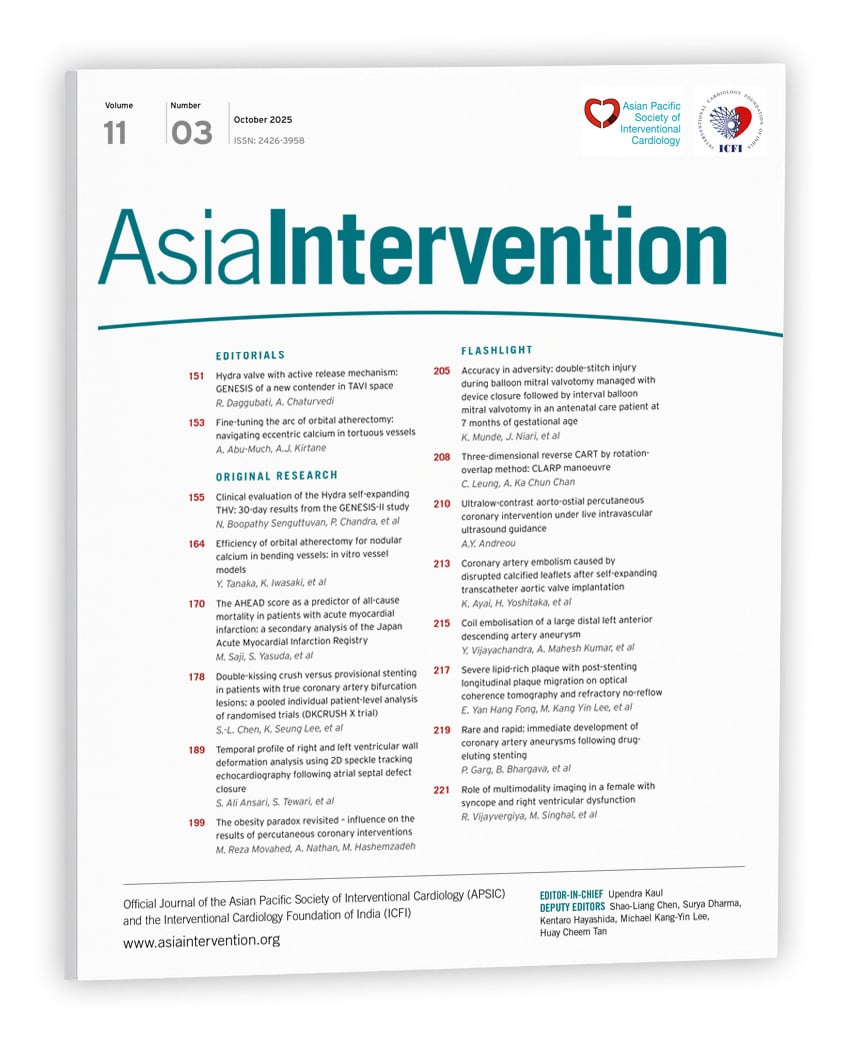A 34-year-old female presented with pedal oedema and abdominal distension that had lasted a year. She had experienced two episodes of unexplained syncope in the 4 years before presentation. Family history revealed sudden cardiac death (SCD) in 3 paternal aunts and one uncle at the age of <35 years. Clinical examination revealed a pansystolic murmur of tricuspid regurgitation (TR) and the pitting pedal oedema. An electrocardiogram showed T-wave inversions in V1-V3 chest leads and frequent polymorphic ventricular premature contractions (VPCs) (Figure 1A). Holter monitoring over 24 hours showed multiple runs of ventricular bigeminy, couplets, and polymorphic VPCs (Figure 1B). An echocardiogram revealed a dilated right ventricle (RV) and moderate TR, with an estimated pulmonary artery systolic pressure of 38 mmHg (Figure 1C). The tricuspid valve was normal in morphology; its annular dimension was 38 mm. The RV fractional area change and tricuspid annular plane systolic excursion were 35% and 16 mm, respectively, suggesting mild RV dysfunction. A contrast angiogram did not show any focal aneurysms at the apex or outflow of RV (Figure 1D). A cardiac magnetic resonance (CMR) image revealed a dilated RV and dyskinesia of the inferior RV free wall with outpouching (Figure 1E, Figure 1F, Moving image 1), without any late gadolinium enhancement. The RV ejection fraction and right ventricle end-diastolic volume index were 39% and 104 ml/m2, respectively. A diagnosis of arrhythmogenic right ventricular cardiomyopathy (ARVC) was made. She had implantable cardioverter-defibrillator implantation for secondary prevention of SCD (Figure 1G). ARVC is a rare, autosomal-dominant, genetic disorder characterised by structural abnormalities of the RV with or without left ventricular involvement. A thorough family history and subtle electrocardiographic and echocardiographic abnormalities can give an early clue to the diagnosis, which can be confirmed with CMR. 
Figure 1. Multimodality imaging for arrhythmogenic right ventricular cardiomyopathy. An electrocardiogram showed T-wave inversions in the chest leads V1-V3 and frequent polymorphic ventricular premature complexes (A). Holter tracing showed a ventricular couplets and bigeminy (B). Two-dimensional echocardiography in the apical four-chamber view showed dilated right atrium and right ventricle (RV) and moderate tricuspid regurgitation (C). An RV contrast angiogram did not show any focal dilatation or aneurysm of RV (D). Cardiac magnetic resonance axial (E) and short-axis (F) views showed outpouchings of the RV lateral and inferior walls (red arrows). The fluoroscopy image shows an implantable cardioverter-defibrillator device in the index patient (G).
Ethical approval
All procedures performed in studies involving human participants were in accordance with the ethical standards of the National Research Committee and with the 1964 Helsinki Declaration and its later amendments or comparable ethical standards.
Informed consent for publication
Written informed consent was obtained directly from the patient before publishing this case.
Conflict of interest statement
The authors have no conflicts of interest about the submitted article to declare.

